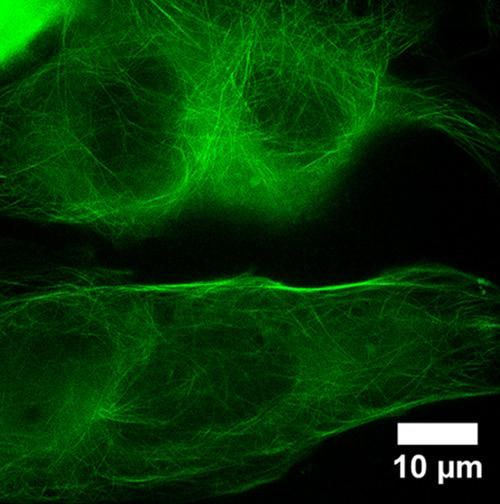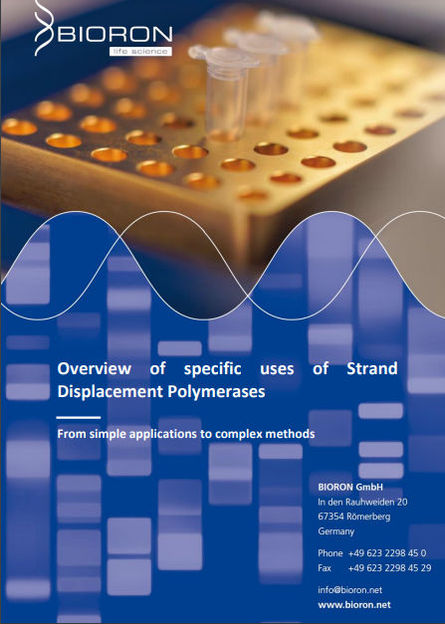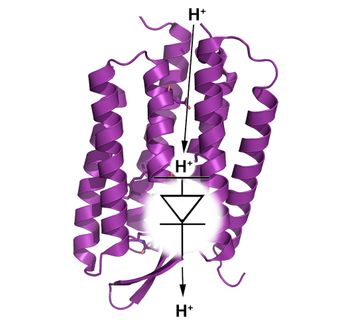High-throughput process for the optimization of crystallization conditions for proteins
The spatial structure of a protein is critical to its function and is therefore of special interest to bioscientists. The difficulty is this: in order to determine the structure by X-ray structural analysis, a crystal is required. Many proteins are difficult to crystallize, requiring the use of precipitation agents or other additives. Many complex experiments are needed to work out the optimal crystallization conditions for each protein. Chicago researchers led by Rustem F. Ismagilov have now successfully used a new microscale method for growing protein crystals within tiny drops. This allows for quick and easy determination of the best parameters.
The technique is based on a thumbnail-sized plastic chip with a system of very fine channels. The first side channel contains an aqueous solution of the protein, the second contains the precipitation agent, and a third contains a buffer solution and other additives. These three side channels join the main channel, through which a special oil is flowing, in the same place. When the solutions in the side channels are pushed through slowly, tiny drops form at the place where the channels join together. These drops of only a few nanoliters contain all three components. They are carried along by the flowing oil and end up in a long, fine, glass capillary. The composition of the drops can be varied by changing the rate of flow in each of the individual side channels. When the capillary is full of tightly packed drops, separated from each other by the oil phase, it is removed from the chip, sealed, and cooled. The protein crystallizes out in drops that have the right ratio of concentrations. To speed up the crystallization, the drops can also be concentrated in a controlled fashion. A second system of side-channels generates a drop that contains only an aqueous salt solution. The two types of drops are then pushed into the oil in an alternating fashion. The trick is this: the concentration of salt in the "salty drops" is higher than in the protein-containing drops. Osmotic pressure thus causes water molecules to slowly drift through the oil from the drops of low salt content to those of higher salt concentration. The protein-containing drops thus shrink-causing their protein concentration to rise.
Because it is possible to X-ray the crystals directly in the capillary, it is even possible to forage through the filled capillary for crystals of sufficiently high quality for structural analysis. This eliminates the danger of damaging the sensitive structures when transferring them to a second support. It is then possible to use the optimal conditions identified by this method to grow bigger protein crystals for structural determination.
Organizations
Other news from the department research and development

Get the life science industry in your inbox
By submitting this form you agree that LUMITOS AG will send you the newsletter(s) selected above by email. Your data will not be passed on to third parties. Your data will be stored and processed in accordance with our data protection regulations. LUMITOS may contact you by email for the purpose of advertising or market and opinion surveys. You can revoke your consent at any time without giving reasons to LUMITOS AG, Ernst-Augustin-Str. 2, 12489 Berlin, Germany or by e-mail at revoke@lumitos.com with effect for the future. In addition, each email contains a link to unsubscribe from the corresponding newsletter.
Most read news
More news from our other portals
Last viewed contents
Phosphocholine

Sartorius to open new Application & Service Hub in Shanghai - Significantly extended capabilities in biological drug discovery, process development, testing and validation to meeting growing local customer demand
Basal_plate_(neural_tube)
Pennaceous_feather

Characterizing Viral Vector Fullness in Density Gradient Separations
Potassium_sorbate
Shass_pollak
Amico_Laboratories
List_of_EC_numbers_(EC_4)
King_Cobra

HyPer-Tau provides spatially-resolved hydrogen peroxide sensing in cells





















































